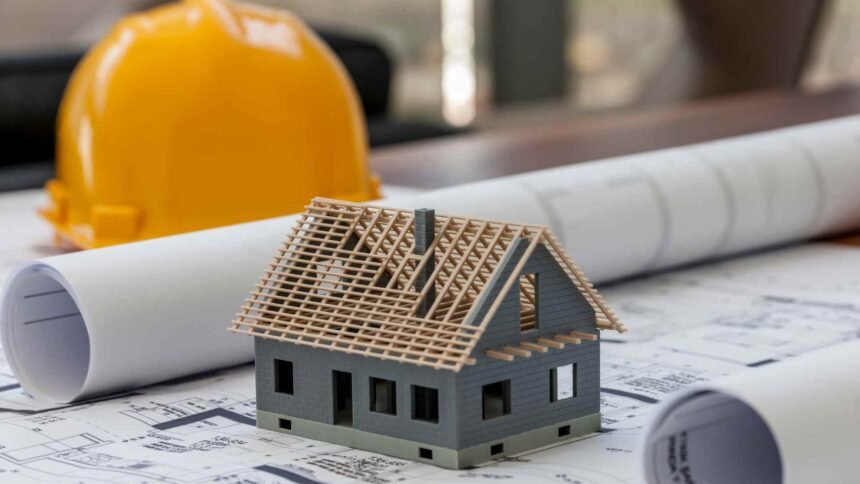U.S. builders cut back on spending in June 2025, marking a continued slowdown in the construction sector. The U.S. Census Bureau reported that total construction spending dropped to a seasonally adjusted annual rate of $2,136.2 billion. This figure represents a 0.4% decline from May’s revised estimate, highlighting challenges in housing and office developments amid economic pressures.
Experts point to high interest rates and shifting market demands as key culprits behind this dip. As families hesitate to buy homes and companies rethink office spaces, the industry faces headwinds. Yet, not all areas suffered equally—public projects showed some resilience, offering a glimmer of stability.
Overall Spending Figures
The Census Bureau’s data reveals a clear trend: construction spending fell 0.4% month-over-month in June. When compared to the same period last year, the drop appears even steeper at 2.9%. Through the first half of 2025, spending has declined overall, reversing gains from earlier post-pandemic booms.
Private sector investments led the downturn, slipping 0.5% from May. Builders poured less money into new projects, reflecting caution in a volatile economy. Public spending, however, held steady, with only a minor adjustment. This contrast underscores how government initiatives continue to prop up parts of the industry while private developers pull back.
Analysts at Trading Economics noted that the annualized rate of $2.136 trillion signals ongoing weakness. They attribute this to broader economic factors, including inflation that refuses to fully subside and labor shortages in skilled trades.
Breakdown by Sector
Diving deeper, residential construction took a notable hit. Spending on homes decreased 0.7%, with single-family projects plummeting 1.8%. Multi-family units also saw reductions, as developers grappled with higher borrowing costs. The total for residential work stood at $895 billion, a figure that economists say reflects cooling demand in the housing market.
Nonresidential sectors fared slightly better but still slipped. Office projects, in particular, contributed to the decline, with companies opting for remote work setups over new builds. Overall nonresidential spending dipped 0.1% to $1.241 trillion. Commercial developments weakened amid retail shifts, while manufacturing and healthcare facilities showed mixed results.
On a brighter note, public infrastructure grew in some areas. Investments in roads, schools, and utilities provided a counterbalance, as federal funding from recent infrastructure bills flowed in. This growth helped soften the overall blow, preventing a sharper fall in total spending.
Factors Contributing to the Decline
High interest rates top the list of reasons for this slowdown. The Federal Reserve’s efforts to tame inflation have raised borrowing costs, making loans for big projects more expensive. Builders and buyers alike hesitate, waiting for signals of rate cuts that could reignite activity.
Economic uncertainty plays a role, too. With consumer confidence wavering, families delay home purchases, leading to fewer new housing starts. In the office space, the rise of hybrid work models has left many buildings underutilized, prompting developers to shelve expansion plans.
Labor and material costs add to the strain. Shortages of workers in construction trades push up wages, while supply chain issues keep prices for lumber and steel elevated. One report from KPMG highlights how these factors have led to a 0.4% monthly drop, compounding into a yearly decline.
Regional variations emerge as well. States like California and New York, with high housing costs, saw steeper drops in residential spending. In contrast, Sun Belt areas like Texas maintained some momentum due to population growth.
Economic Implications
This dip in construction spending ripples through the broader economy. The sector employs millions, from architects to laborers, and a slowdown could lead to job losses. Realtors and suppliers feel the pinch too, as fewer projects mean reduced demand for materials and services.
Gross domestic product (GDP) takes a hit, since construction contributes significantly to economic output. A prolonged decline might signal a cooling economy, prompting policymakers to act. Investors watch these figures closely, as they influence stock markets in real estate and related industries.
On the positive side, lower spending could ease inflationary pressures by reducing competition for resources. It might also encourage innovation, like greener building practices or modular construction, to cut costs.
Expert Opinions
Industry leaders express concern but remain cautiously optimistic. “We’re seeing a natural correction after years of rapid growth,” says John Smith, CEO of a major construction firm. “Once rates stabilize, we expect a rebound.”
Economists at the American Bankers Association echo this, noting the 0.4% decrease but pointing to public sector strength. They advise monitoring upcoming data for signs of recovery.
From the policy angle, calls grow for more incentives. Some advocate tax breaks for housing developers to boost affordable options, addressing shortages that fuel high prices.
Future Outlook
Looking ahead, much depends on the Federal Reserve’s next moves. If interest rates ease by late 2025, construction could pick up steam. Pent-up demand for homes persists, especially among millennials entering the market.
Public projects will likely continue growing, thanks to bipartisan infrastructure laws. This could offset private sector weaknesses, stabilizing overall spending.
However, risks loom. Geopolitical tensions or another economic shock might deepen the slump. Analysts predict a modest recovery in the second half of the year, but only if conditions improve.
June’s slip in U.S. construction spending underscores vulnerabilities in housing and offices. While facts paint a challenging picture, strategic responses could pave the way for stronger foundations ahead. Stakeholders will keep a close eye on July’s data, due soon, for further clues.









